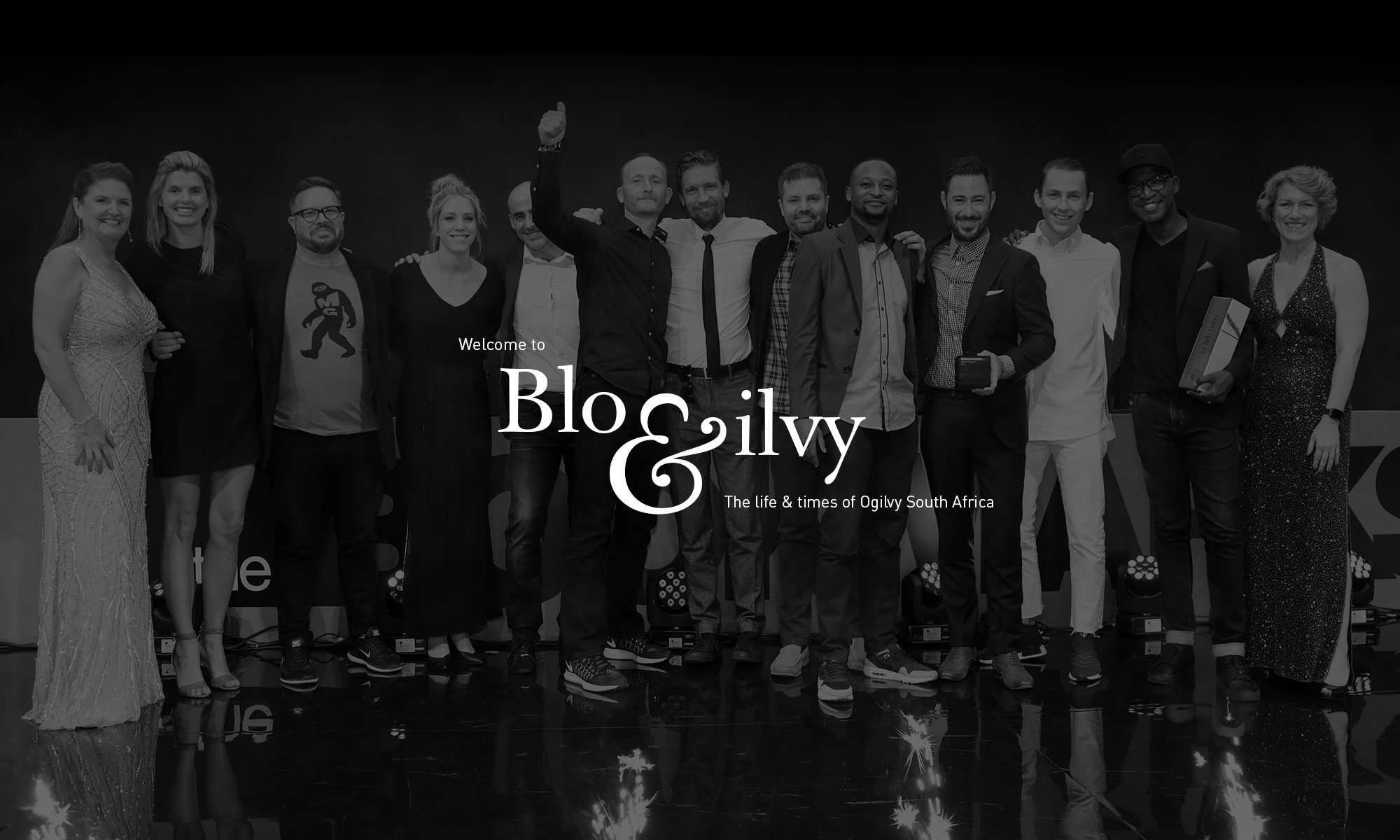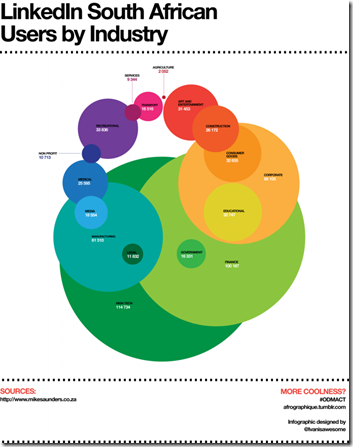For more Digital Marketing help go to www.ogilvydma.com
BUZZWORD COMPLIANCE GLOSSARY
Online Social Media
@(name) This symbol precedes people’s “handles” or screen names on Twitter when a tweet is directed at them.
 #(hastag) employed (particularly on Twitter) to keep track of tweets that are all part of a single subject, event, or topic.
#(hastag) employed (particularly on Twitter) to keep track of tweets that are all part of a single subject, event, or topic.
Ajax is a group of interrelated web development techniques used from the client-side to create interactive web applications to enhance the user experience.
App or Applet is any small application that performs one specific task; sometimes running within the context of a larger program, perhaps as a plugin.
Aggregation is the process of gathering content from blogs and other websites that provide RSS feeds. The results may be displayed in an aggregator website or directly to your desktop through a newsreader.
Alerts certain search engines allow you to specify words, phrases or tags that you want to keep tabs on, and deliver results of those searches by email or by RSS feed. Useful to to check whether you, your organisation, your blog has been mentioned somewhere online and respond if needs be.
API (Application Programming Interface) is an interface that enables interaction with other software or platforms to synchronise or “mashup” activity.
Avatars are the graphics used to represent a person or organisation’s profile. This may or may not be a true representation of yourself.
Back channel emails, tweets, pictures or other messages sent between delegates at a conference. They can have a significant effect on how the session is perceived publicly.
Beta a website or software project released to users for testing before its official release.
Blogs are easy to publish websites with dated items of content in reverse chronological order, self-published by bloggers. Items – sometimes called posts – may have keyword tags associated with them, are usually available as feeds, and often allow commenting. Blogs are easy to set up, and update.
 Blogosphere the totality of blogs on the Internet.
Blogosphere the totality of blogs on the Internet.
Chat is interaction on a web site through a chat application, with others adding text items one after the other. A dedicated chat room – differs from a forum because conversations happen in “real time”.
Comments blogs may allow readers to add comments under posts, and may also provide a feed for comments as well as for the primary content. So you can keep up with conversations without having to revisit the site to check whether anything has been added.
Content management systems (CMS) are software platforms offering the ability to create static web pages, document storage, blogging, wikis, and other tools. There are a host of web-based open-source CMS’s where dynamic development and debugging is crowdsourced through the user-community like WordPress or Drupal.
 Crowdsourcing where the user-community or those outside an organisation who are prepared to volunteer their time and skills contributing content and solving problems.
Crowdsourcing where the user-community or those outside an organisation who are prepared to volunteer their time and skills contributing content and solving problems.
Feeds are the means by which you can read, view or listen to items from RSS-enabled sites without visiting the site, by subscribing and using an aggregator or newsreader. Feeds contain the content of an item and any associated tags without the design or structure of a web page.
Flashmob a large and sudden gathering of people – generally to do something odd or funny then disperse as quickly as they arrived. Flashmobs are organised by viral emails or through mobile or social networking channels.
Folksonomies (organic online taxonomies) are created by users classifying content online, by adding tags to make sense of it in new and sometimes unexpected ways.
Friend (as verb) to add someone’s profile to your network on an online social network.
Forums are discussion areas on websites, where people can post messages or comment on existing messages independently. Before blogs developed, email lists and forums were the main means of conversing online.
 Instant messaging (IM) a way to chat to people in realtime using an IM tool like Gchat or Yahoo Messenger. Generally a good alternative to emails for rapid exchange.
Instant messaging (IM) a way to chat to people in realtime using an IM tool like Gchat or Yahoo Messenger. Generally a good alternative to emails for rapid exchange.
Links are the highlighted text or images that, when clicked, jump you from one web page or item of content to another. Bloggers tend to link often within posts to reference outside content, or their own.
Location the nature of location and presence has been radically changed by the Internet and social media, because you can be active online in many different places, including in virtual worlds while literally geolocated in one realworld set of co-ordinates.
Logging in is the process to gaining access to a website that restricts access to content, and requires registration. This usually involves typing in a username and password.
Lurkers are people who read but don’t contribute or add comments to forums. The 1% rule-of-thumb suggests about only one per cent of people contribute new content to an online community, another nine percent comment, and the rest lurk.
Mashups are the combinations of various web-applications and platforms with each other to either create a new web services or to improve usability on the primary site.
Newsreader is a website or desktop tool (client) that act as an aggregator, gathering content from blogs and similar sites using RSS feeds so you can read the content in one place, instead of having to visit the sites themselves.
Online being connected to the Internet.
Offline as expected, not connected to the Internet.
Open-source “software whose source code is available under a license that permits users to study, change, and improve the software, and to redistribute it in modified or unmodified form. It is often developed in a public, collaborative manner” – Wikipedia
Peer-to-peer refers to direct interaction between two people in a network. In that network, each peer will be connected to other peers, with the invitation to share.
Permalink is the web-address (URL) of a specific item of content like an individual blog post, rather than the address of the primary web page with tons of content to sort through.
Photosharing is uploading your own images to a photosharing website like Flickr. You can add tags and offer people the opportunity to comment, or even remix your photos if you add an appropriate copyright license.
Platform is the software framework or system within which web-based tools work and can add upon.
Plugin consists of a computer program that interacts with a host application or platform to provide a very specific function “on demand”. Add-on is often considered the general term comprising plug-ins, extensions, and themes.
Podcast is an audio (or video – sometimes vodcast) content that can be downloaded through a website or service like iTunes to listen or view offline.
Post is an item on a blog or forum.
Presence showing that you are available for contact by instant messaging or on chat. Profiles are the information that you provide about yourself when signing up for a social networking site.
Reader another name for newsreader.
 Remixing social media offers the possibility of taking different items of content combining them in different ways. Please note, you can do this with other people’s content if they invite it by adding an appropriate copyright license.
Remixing social media offers the possibility of taking different items of content combining them in different ways. Please note, you can do this with other people’s content if they invite it by adding an appropriate copyright license.
RSS is short for Really Simple Syndication. This allows you to subscribe to content on blogs and other social media and have it delivered to you through a feed.
 Sharing is offering other people the use of your text, images, video, bookmarks or other content by adding tags, and applying copyright licenses that encourage use of content.
Sharing is offering other people the use of your text, images, video, bookmarks or other content by adding tags, and applying copyright licenses that encourage use of content.
Social Bookmarking is saving the address of a website or item of content to a social bookmarking site. If you add tags, others can easily use your research too and see what you’ve recommended. If groups agree on the tags they’ll use, collaborative research is much easier.
Social gaming games like Farmville, played across a social network. Distinct from dedicated Massive Multiplayer game worlds like World of Warcraft.
Social media the term for the web-based tools and platforms people use to publish, converse and share content online.
Social networking sites the online places where users register, create a profile for themselves, and socialise and share with other registered users using a range of social media tools including blogs, video, images, tagging, lists of friends, forums and messaging. Think Facebook or Myspace.
Subscribing is the process of adding an RSS feed to your aggregator or newsreader.
Tags are keywords attached to a blog post, bookmark, photo or other item of content so you and others can find them easily through searches and aggregation. Tags are to the user’s choosing & cluster to form folksonomies.
Tool a software application that either interacts with the Web from a local computer or is web-based, to enable you to do stuff online.
Trackback or linkback a method to see who has linked to a specific post or permalink. Generally listed in the comment section of blogs as part of the conversation.
Troll “someone who posts inflammatory, extraneous, or off-topic messages in an online community, forum, chat room or blog, with the primary intent of provoking other users into an emotional response or of otherwise disrupting normal on-topic discussion.” – Wikipedia
Tweet a post or update on Twitter.com or one of the applications that uses its API
UGC or user generated content is text, video, music or other content developed and shared by user, not the platform
owners upon which it is shared.
Videosharing the video version of photosharing on sites like Youtube.
Virtual worlds online worlds like Second Life or World of Warcraft, where you can create an avatar of yourself, socialise and co.create that world with other residents.
Web 2.0 term coined by O’Reilly Media in 2004 to describe blogs, wikis, social networking sites and other Internet-based services that emphasize collaboration and sharing. It associates the idea of the Internet as a platform.
Web-based applications tools created by commercial and opensource organisations providing a growing range of free or low-cost utilities including email, calendars, word processing, and spreadsheets that can be used on the web rather than your desktop. (Remember cloud computing).
Widgets stand-alone applications you can embed in other applications, like a website or desktop, or mobile to help you do stuff online, like draw in an RSS feed.
Wiki is a web page/s that can be edited collaboratively by a group of people online. Wikipedia, is the best known wiki. They can also be used as a really quick way to set up a web site.
XML (Extensible Markup Language) is a set of rules/standard for encoding documents online and to transport and store data in a fashion suited to the social web.
Originally from the Ogilvy Digital Marketing Academy Blog













